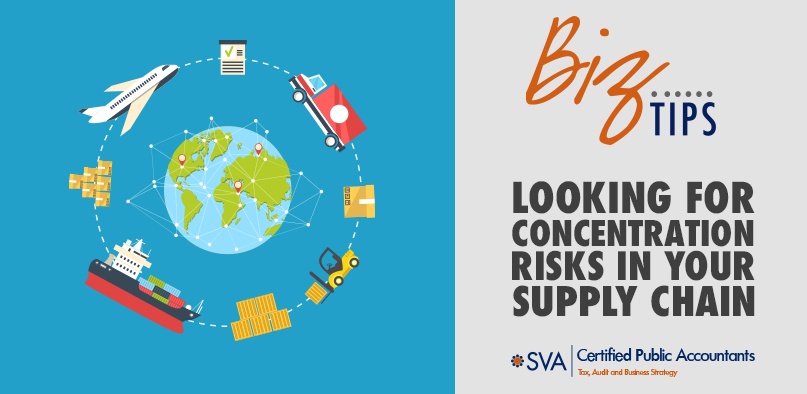Concentration risks are a threat to your supply chain.
These occur when a company relies on a customer or supplier for 10% or more of its revenue or materials, or on several customers or suppliers located in the same geographic region. If a key customer or supplier experiences turmoil, the repercussions travel up or down the supply chain and can quickly and negatively impact your business.
To protect yourself, it’s important to look for concentration risks as you monitor your financials and engage in strategic planning. Remember to evaluate not only your own success and stability, but also that of your key customers and supply chain partners.
Two Types of Concentration
Businesses tend to experience two main types of concentration risks:
1. Product-related.
If your company’s most profitable product line depends on a few key customers, you’re essentially at their mercy. Key customers that unexpectedly cut budgets or switch to a competitor could significantly lower revenues.
Similarly, if a major supplier suddenly increases prices or becomes lax in quality control, it could cause your profits to plummet. This is especially problematic if your number of alternative suppliers is limited.
2. Geographic.
When gauging geographic risks, assess whether a large number of your customers or suppliers are located in one geographic region. Operating near supply chain partners offers advantages such as lower transportation costs and faster delivery. Conversely, overseas locales may enable you to cut labor and raw materials expenses.
But there are also potential risks associated with geographic centricity. Local weather conditions, tax rate hikes and regulatory changes can have a significant impact. And these threats increase substantially when dealing with global partners, which may also present risks in the form of geopolitical uncertainty and exchange rate volatility.
Financially Feasible
Your supply chain is much like your cash flow: When it’s strong, stable and uninterrupted, you’re probably in pretty good shape. Our firm can help you assess your concentration risks and find financially feasible solutions.

© 2017

